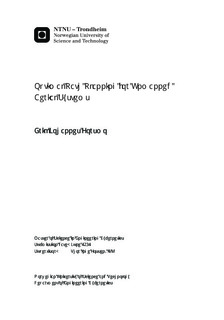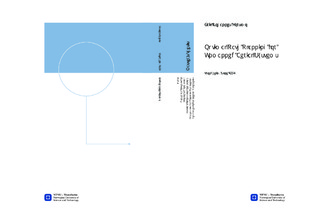| dc.description.abstract | This thesis is a contribution to the Unmanned Aerial Vehicle (UAV) project at the Department of Engineering Cybernetics, which is a project where contributions from master students and Phd students will result in an autonomous aerial vehicle. The unmanned vehicle laboratory has its own UAV, the Odin Recce D6 delta-wing aircraft which is to be considered in the overall project. When the UAV is in the air on a mission, one important thing is to ensure that the UAV detects obstacles, such as mountains, buildings and other aircrafts. No-fly areas should be avoided by the path planner. This thesis considers a guidance system that will set up a path from the initial position to the final destination, and make sure that the generated trajectory is safe.One problem with the design of the optimal path has been that the designed path gives textit{corner cutting} when obstacles from the environment is included in the path-planner. To avoid this problem, which happens because discrete time is considered, two different solutions to avoid this problem have been discussed closer. Implementation of constraints and different cost functions for path planning with collision avoidance using the Mixed Integer Linear Programming (MILP) is one of the purposes of this thesis. The MILP algorithm is developed for the case of planar motion where the UAV has to fly around the obstacle, and can't fly over or under it. The design of the path path planner using MILP is done in two different ways. One where obstacles are known at the beginning of the optimization, and one where obstacles are added as information to the path planner when they are in the range of the UAVs radar. It is shown that the implementation with obstacle radar detection is more realistic, and that it also improves the computation time. As the author knows this method has not been published in articles up to this date. Two different approaches for search of a defined area with an arbitrary number of UAVs with camera systems have been developed and implemented through this thesis. As far as the author of this thesis knows these approaches for search have not been published up to this date. Efficient search and low computational complexity has been important design factors during the development of these approaches.The final systems are simulated in MATLAB for some test-scenarios. Also, reflection and discussion on further improvement on the path planning system are included in the report. This includes further improvement of the guidance system using receding horizon strategies.A literature study on path planning with receding horizon has been done. | nb_NO |

